Let me start with a caveat: This post has nothing to do with onions - at least nothing to do with
edible onions (plants of the Allium genus, most notably Allium cepa). However, this post has everything to do with plants that
look like onions. Coming from someone who is usually kind of picky about using the binomial (genus and species) taxonomy as much as possible and ignoring the confusing common names, I'll admit this is an odd classification. But hopefully you'll see the same striking similarities between these plants that made me combine them in one post. As it turns out, the plants I describe below
do fall within the same family - Hyacinthaceae. So I guess if I were a botanist who classified plants as a career, I would have at least gotten these two guys right by placing them in the same family. :)
Pregnant Onion (Ornithogalum longibracteatum)
Beyond the very familiar tulip bulb, there are a number of plants that have distinctly onion-like appearances. Some of them show off their onion appearance above ground. Many of these plants have been given common names which pay tribute to the onion similarity. It is easy to see where
Ornithogalum longibracteatum gets it's common name - the pregnant onion. This is a really fun houseplant to keep:
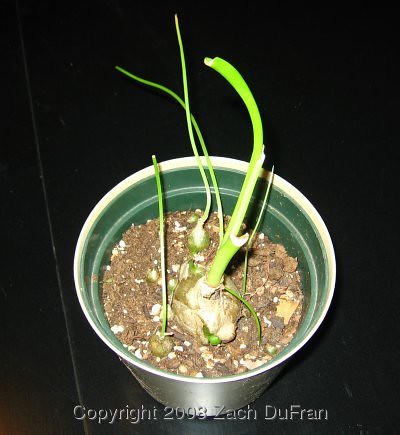 |
| My pregnant onion (Ornithogalum longibracteatum) |
New plant bulbs are produced under a skin on the "mother" bulb and they fall off as they grow large enough. These little bulbs are self-maintained, not requiring support from the mother plant, once they become detached. Sometimes the "babies" sit on the soil surface for months before sprouting from the top and subsequently growing roots. That unique behavior alone is reason enough to keep these little plants, in my opinion. The root system seems almost to be an afterthought for this plant.
 |
| Pregnant onion. Notice the "babies" at various stages of growth - some just beginning to bulge under the skin of the "mother." |
My plant has not bloomed, but the inflorescence of this plant is a long bloom stalk containing up to 100 tiny star shaped blooms, similar in appearance to the blooms of the plant below.
The pregnant onion is a very easy plant to keep. I water mine whenever the soil is thoroughly dry. The bulbs store a lot of energy and the plant can survive on little water. The pregnant onion thrives in bright, indirect light, but will survive in lower light conditions. With time, the bulb can grow to be quite large, but in the two years I've had mine, the bulb has only grown to a little less than the size of my fist.
Silver Squill (Ledebouria socialis)
Another "onion-like" plant that I have is called Silver Squill. I have two plants that can go by this common name, and I have not been able to determine yet whether they are in fact the same species, or not. I purchased the first plant for it's unique foliage, but it has the same onion-shaped above ground bulb as the pregnant onion. The beautiful variegated foliage is dappled in a dark green and a lighter silvery green. The undersides of the leaves have a purple tint.
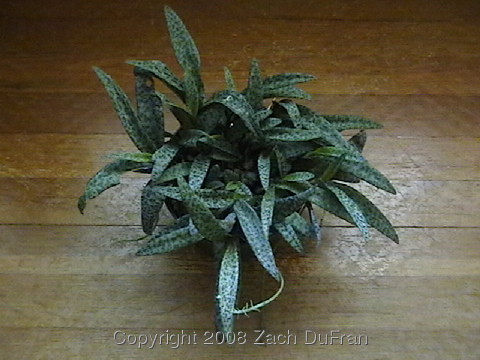 |
| Silver Squill, Leopard Lily - Ledebouria/Scilla socialis |
I originally thought this plant was Ledebouria socialis. However, I discovered that my plant actually might be from the genus Scilla, when I came across this smaller-leaved variety below:
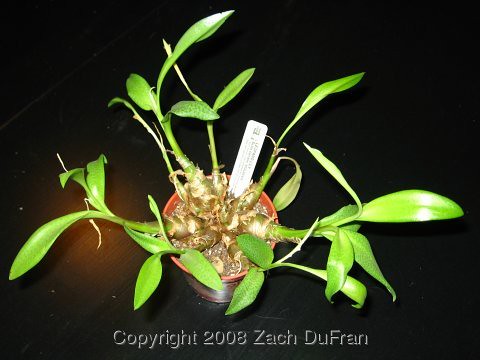 |
| My other Silver Squill, Leopard Lily - Ledebouria/Scilla socialis? |
This smaller plant is tagged as Scilla socialis 'Violacea' and looks very similar to my first Silver Squill. However, the leaves are shorter, lighter in color and have a little bit different looking variegation.
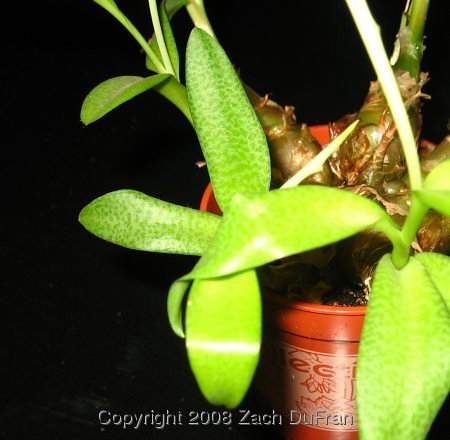 |
| Foliage of my other Silver Squill |
Just like the pregnant onion, these plants propagate by producing "baby" bulblets underneath the skin, which fall off and grow separately once matured. You can see the bulblets in the picture below.
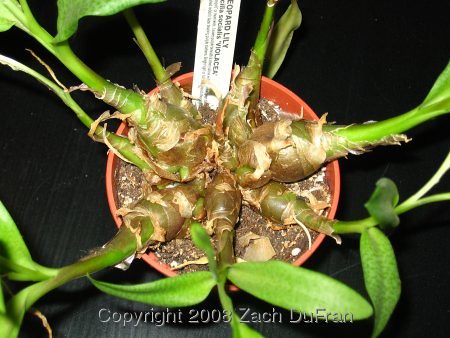 |
| Silver squill babies |
As I understand, there are many varieties and cultivars available of this plant and the inflorescence is one of the best identifying traits. I believe that my two plants are different varieties (maybe both are cultivars). My first Silver Squill had just finished flowering when I bought it and has not flowered since. But I have seen my smaller Squill flower once. The flowers are not showy, but mainly because they are so small.
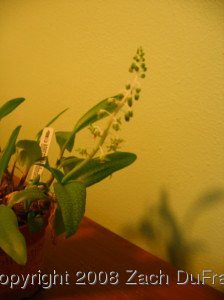 |
| Silver squill inflorescence |
A close-up photograph reveals a lot of character. I didn't get a good close-up myself, but here is one that I found for Scilla socialis 'Violacea' which matches my own plant.
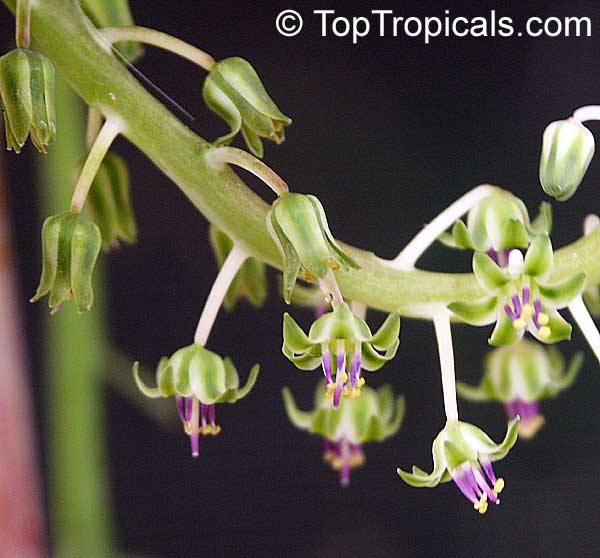 |
| Scilla socialis 'Violacea' inflorescence |
Hopefully I will get to see my larger Silver Squill flower in the next year and will be able to identify it more specifically.








Pregnant Onion was one of the very first plants I ever grew. My grandma gave me a baby from her plant, and now, 20 or so years later, that baby has given "birth" to quite a few babies of its own. It's still going strong in my parents backyard!
ReplyDeleteGreat website, I love reading through blogs and will be sure to look for updates on your site. Keep up the good work.
ReplyDeleteFern-
ReplyDeleteThat's a great story. What an appropriate plant to have initiated your love of plants!
My mom and 3 grandparents are the reason I'm the planty person I am today as well. :)
Hey Zach,
ReplyDeleteThis also comes in a really neat variegated form!
i just got this "preganat onion " plant and wanted to know how would a person go about starting another 2or3 different new pots using the baby ones? it's realy very interesting
ReplyDeleteI have a number of plants like this and have never been able to find a name. I have 4 or 5 pots of them. Itcame from my mother when she passed. Mine flower every spring after wintering in my greenhouse. A friend just gave me a dwarf one that is exactly the same, just smaller. Thanks for helping me learn more about this interesting plant.
ReplyDelete